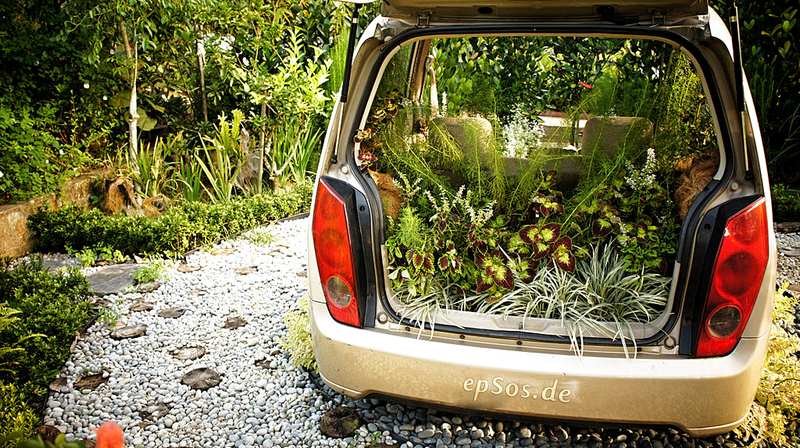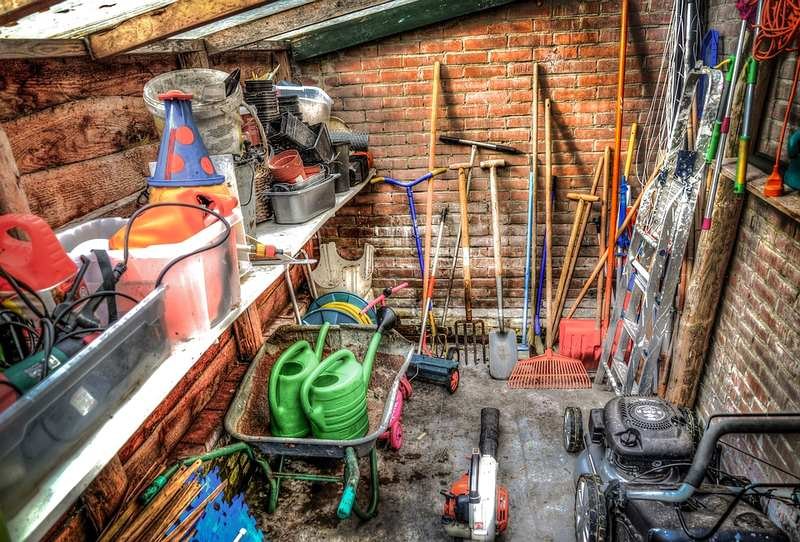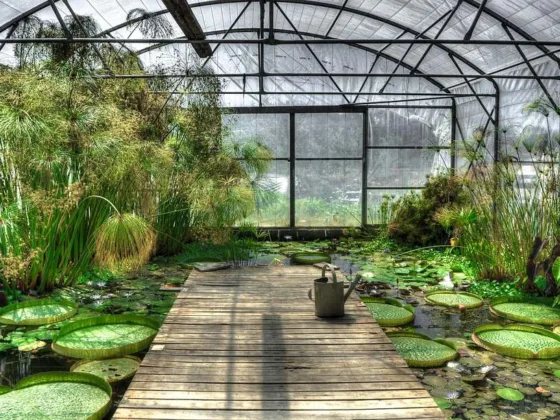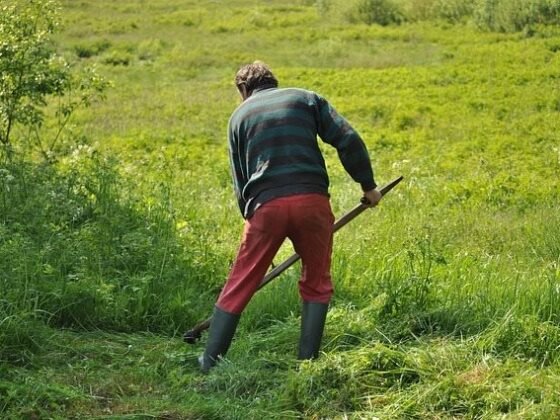Table of Contents Show
August means high summer and lots of it! Mostly, that means two things for gardeners: hot and dry. But as in July, it also means bugs, all kinds, everywhere. And some little varmints, too, like field mice. They’re looking for shade, food, and water, like the rest of us.
Some flowers — such as celosia, zinnia, marigold, portulaca, heliopsis, daylilies, scabiosa, nasturtium, coreopsis, coneflower, yarrow, sunflower and most wildflowers — thrive in hot and dry conditions. But, even they still need occasional watering when rain becomes scarce in August.

August Gardening Tips, Enjoy the August Curtain Call
The benefits of an occasional thunderstorm won’t last long in August, when daytime temperatures consistently reach the high 90s and low-100s in many zones, even the most northern at times. During extreme heat, daily watering will be necessary just to keep annual flowers from wilting. Perennials have deeper root systems, but they’ll appreciate watering, too.
The garden hose and sprinklers will provide the most consistent relief to all plantings, including young trees and anything looking stressed. This is where a good layer of mulch helps the soil retain valuable moisture.
Some types of lawn grasses become dormant in the August heat, and no amount of watering and feeding will change that. But don’t worry. Also, mow grass as high as possible, when it needs it.
Must Read:
This is the last growing month for many flowering annuals and perennials. Many will need cutting back and feeding to produce their last blooms. Start clearing out straggly, spent plants. And remember to keep the weeds under control. They’ll drop seeds for next year if allowed to flourish in the garden and lawn.
There’s also a lot to enjoy in August. Many plants are in bloom, including chrysanthemums and asters. The air is sultry. Iced tea reigns. Monarch butterflies and hummingbirds are flitting around. It’s time for badminton and croquet. It’s the last month before fall when school starts and life changes again.
So, have a barbecue. Get out the citronella candles and sit outside with friends and family on those warm, star-lit nights. The mosquitoes and biting flies will be out, as well, so keep the insect repellent close.
Indoors
August Gardening Tips for Houseplants
- Prepare to re-pot houseplants that have been outside during the summer. You will be bringing them back indoors in September, and they may need bigger pots to accommodate the summer growth. Check for slugs and insects. Cut back extravagant foliage. They cannot support this growth during the winter months indoors. Re-potting in August gives them time to settle into their new homes before they come in for the winter.
- Feed indoor houseplants at full strength for the last time this growing season. After this feeding, switch to feeding them every other month with a diluted solution. This regimen continues throughout the winter months.
Outdoors
August Gardening Tips for Lawn Care
- Keep cutting grass high. This helps preserve moisture and prevent sunburn.
- Feed lawn at full rate for the last time this season. After this month, the next application will be a fall/winter fertilizer.
- Apply perennial broadleaf weed controls this month. Either spray or apply granular chemicals.
- Consider planning for lawn aeration next month. Power rake or verticut if thatch is a half-inch or thicker. This also prepares the lawn for over-seeding next month, if desired.
- You can still apply controls for white grubs and mole crickets this month.
August Gardening Tips for Annuals
- Apply pre-emergent weed controls, such as Preen, to gardens, except where you intend to plant any seeds. Pull existing weeds.
- Feed all blooming plants. If some annuals have become straggly, cut them back by about one-third, feed heavily and keep them watered. They will produce a new round of blooms.
- Don’t let flower heads go to seed. “Deadhead” the plants—clip or pinch off spent flowers. This keeps the plants from exerting energy to produce seed and makes them produce more flowers, instead. You can let some flower heads go to seed if you want to try planting them. But remember that many seeds from hybrid annuals do not produce well or are not true to the original plant.
- Give dahlias a complete plant food this month. They start blooming late this month and continue in September. Continue to water thoroughly about once a week—but don’t spray the plants. Try to water at ground level. Apply insect controls about once a week. Remove all but one or two flower buds to encourage the formation of a large, specimen bloom.
August Gardening Tips for Bulbs
- Begin preparation of beds where you will plant bulbs and transplant perennials. In September, October, and November. Loosen the soil and add fertilizer and amendments, such as compost, lime, and gypsum.
- Nursery mail-order catalogs showing all kinds of bulbs should start arriving. Look through them and order this month.
- Plant crown imperial (fritillaria imperialis) bulbs as soon as you can get them; and madonna lily (lilium candidum).
- Garden centers and local nurseries will begin offering spring bulbs. Don’t plant any yet—it is too hot. Store them in a cool place for planting in September and October.
August Gardening Tips for Perennials
- Chrysanthemums and hardy asters need fertilizer and consistent watering in August. Pinch them back to encourage more flowering.
- Force amaryllis into dormancy this month by gradually withholding water. Then rest the plant for the next eight weeks. Bring it out again in late November or early December for a holiday bloom.
- Feed all blooming perennials, especially those in containers. Cut back straggly growth and remove spent blooms to encourage their last blooms of the season.
- Tidy up perennial flowerbeds. Pull weeds and apply pre-emergent weed controls, such as Preen.
- Do not fertilize roses now.
- If you are ordering peonies via mail to transplant in September and October, do it now.
Dividing and Transplanting
- Bearded iris may be divided and transplanted this month.
- Dormant roots of bluebell or Virginia cowslip may be planted now, along with bloodroot (sanguinaria candensis) for bloom in April. Plant in groups.
- Oriental poppies become dormant in July and August. Now, they may be dug, divided and transplanted. Oriental poppy seed is not reliable and root cuttings are the best for propagation. Commercial growers offer root cuttings in August, or again in spring.
- Plant corms of colchicum, giant autumn-flowering crocus, now for flowers before the snow. They will bloom in September.
- Plant hardy amaryllis (surprise lily/Lycoris squamigera) now and cover with about four inches of soil. It should winter over.
Other perennials and biennials that can be seeded or divided and transplanted now and into September and October:
| Name of Plant | How to Propagate |
|---|---|
| Alyssum (Basket of Gold) | (stem cuttings to transplant in spring) |
| Coreopsis (Tickseed) | (seed) |
| Chrysanthemum | (plant nursery stock) |
| Foxglove (Digitalis) | (seed) |
| Hollyhock (Alcea Rosea) | (seed) |
| Lunaria (Dollar Plant) | (seed in a protected area) |
| Lungwort (Pulmonaria) | (root division) |
| Oriental Poppy | (root division, nursery stock) |
| Pansy (Viola) | (seed, nursery stock) |
| Shasta Daisy | (seed) |
Many perennials are blooming in August. Look for these in your garden:
Anthemis (Golden Marguerite) | Aster (Hardy) |
Balloon Flower (Platycodon) | Bee Balm (Bergamot/Monarda) |
Centaurea (Cornflower) | Cerastium (Snow-in-Summer) |
Chinese Lantern (Physalis) | Coral Bells (Heuchera) |
Coreopsis (Tickseed) | Cupid’s Dart (Catanach) |
Daylily | Felicia (Blue Daisy) |
Feverfew (Chrysanthemum) | Flax |
Fleabane (Erigeron) | Gaillardia (Blanket Flower) |
Geranium (Cranesbill) | Globe Thistle (Echinops) |
Helianthus (Perennial Sunflower) | Heliopsis (Oxeye) |
Hypericum (St. John’s Wort) | Hosta |
Jupiter’s Beard (Red Valerian) | Lavender |
Liatris (Gay Feather) | Lobelia (Cardinal Flower) |
Loosestrife (Lythrum) | Lupine |
Meadowsweet (Dropwort) | Monkshood (Aconitum) |
Oenothera (Evening Primrose) | Phlox |
Poker Plant (Torch Lily) | Potentilla (Cinquefoil) |
Rudbeckia (Coneflower/Echinacea) | Salvia (Blue/Sage) |
Scabiosa (Pincushion Flower) | Sedum (Stonecrop) |
Stachys (Lamb’s Ears) | Stokesia (Stokes’ Aster) |
Veronica (Speedwell) | Yarrow (Achillea) |
Pests and Diseases
- Grasshoppers seem to love the hot, dry months. As soon as you see them or see damage to your flowers and any other plants, apply necessary controls.
- Look for signs of the fall webworm, which are beginning to make webs now on elms, box elders, wild cherry and mulberry trees. Cut off the affected limbs and destroy or discard them — not on the compost pile. Or call an arborist to apply chemicals if there are large numbers of webs.
- Watch for the golden digger wasp (cicada killer), which becomes a pest during August and September. It is black and yellow and the female has a large stinger. They dig burrows in lawns and dry, sunny sites. Consult an expert on controls if they become a problem, but wetting down their burrows usually sends them fleeing.
- Spray roses to prevent black spot. Pick up fallen rose leaves, which may become a home for black spot. Cut faded roses and dispose of immediately. They may contain thrips and beetles.
- Watch for green worms on elms, and treat as needed.
- Watch for box elder bug. It’s more of a nuisance than trouble to the trees. Control them with spray.
Pruning
- Avoid pruning evergreens after mid-August.
- August is a good month to prune shade and ornamental trees. They may welcome some pruning during this hot period. Remove dead or damaged branches. Remove all suckers, small growths that arise from the main trunk near the soil.
Trees and Shrubs
- Stop fruit tree sprays 2 weeks before harvest. Harvest last of fruit, can or freeze. Keep picking up fruit off ground. Use if good, otherwise discard.
- Do not fertilize flowering shrubs this late in the season. It will encourage new growth, which could be damaged by cold weather.
- Make sure newly planted trees and shrubs are well watered during hot, dry conditions.
Gardening Tools and Equipment

- Check the lawn mower oil level. Clean clogged filters. Remove debris from the mower and hose it down, if needed. Also, rinse out the bag.
- Keep hoses in good repair. Fix leaks. Put in new washers to stop leaking at the spigot and in hose connections. Soaker hoses work well in large gardens and to avoid spraying some plants, such as dahlias, which prefer bottom watering.
- As in July, look into some good hose sprinklers. They can be expensive or not. Different types work better in different areas. To maximize watering time, use a timing device for hose sprinklers. These are found at hardware stores and gardening shops. Also, using a “Y” connection for the water spigot will let you connect two hoses at one time during this hot, dry period.
Watering
- Run sprinklers or set a sprinkler system to operate in the early morning or late evening — but try to avoid watering after dark. This encourages bugs and disease.
- If you have trees growing near the street or in small strips bordered by concrete or other materials, make sure they get enough water during this hot, dry month. Dig or create a basin around the tree, and water it deeply. The evening is best for this because it gives the trees time to absorb the water before another blazing day begins; also, less of the water will evaporate in the daytime heat. Remember that water is cheaper in the long run that replacing a tree.
- When watering grass, do it deeply (for at least an hour) and in the morning or evening, every two to three days. If you have a cool season grass, it will tend to go dormant during extreme heat, while zoysia will thrive.
- During extreme heat, water container plants every day, especially those that are in direct sun. But even container plants, such as impatiens, which are in shady spots, need constant watering at this time. In 100-degree periods, morning and evening watering will help prevent wilting and damage.
- Flower gardens, even in shade, should be watered deeply every couple of days during extreme heat. Let the sprinkler run for at least an hour. Make sure mulch is deep enough to keep the soil cool and retain moisture.
Birds
- Remember to keep the birdbath filled, and empty any brackish water. Do not put any chemicals in birdbaths.
- If you see birds picking around in the garden, look for bugs they may be eating. These include damaging grasshoppers. The birds can do some good in fighting insects, but they probably can’t help enough to prevent plant damage during a heavy infestation.
Miscellaneous
The garden is in full bloom now. Take photos so you will remember its glory during the cold winter months. This also will help you plan for next spring and summer.
Don’t forget the garden journal. August is a good time to make some notes about the summer. Also, check where you stand with your garden budget and overall garden plan.
Monarch butterflies begin to appear this month and next. These large, black and orange-winged butterflies are attracted to sedum, zinnia, marigold, petunia, shasta daisy, hollyhock and many other August blooms.
Must Read:
Bring in cut flowers for drying indoors. Medium to long single-stalk blooms is best for this, excepting those from bulbs and rhizomes, such as gladiolus, daylily and such. Their blooms contain too much moisture and don’t dry well. Hang the flowers upside down, tied loosely together at the ends of the stems. They should be sufficiently dried after about two weeks and many blooms will retain good color.
Choose roses, lavender, tall zinnia and marigold, sunflower, baby’s breath, statice, black-eyed susan, shasta daisy, coreopsis, blue flax, knautia, coneflower, yarrow, fern fronds and branches of meadow rue. After drying, these make lovely arrangements during the winter months and are nice gifts, wrapped with ribbon. There’s also a desiccant available at craft stores that will help preserve them.
Dry herbs for winter use. Clip and clean thoroughly the leaves and stems you will use in cooking and potpourri, including thyme, rosemary, basil, dill, oregano. Cut their stems and hang to dry as you would flowers. Keep these clean from dust, since you’ll be adding them to food. It’s best to crumble the dry leaves and stalks into air-tight containers as soon as they are dry enough.
Dig up and transplant to pots a couple of your favorite plants from the herb garden. Cut back leggy stems and feed generously. Place them in a shady area and keep them well watered, since pots dry out quickly. Putting them in a shady and cooler place will acclimate them to being brought indoors during September and October.









